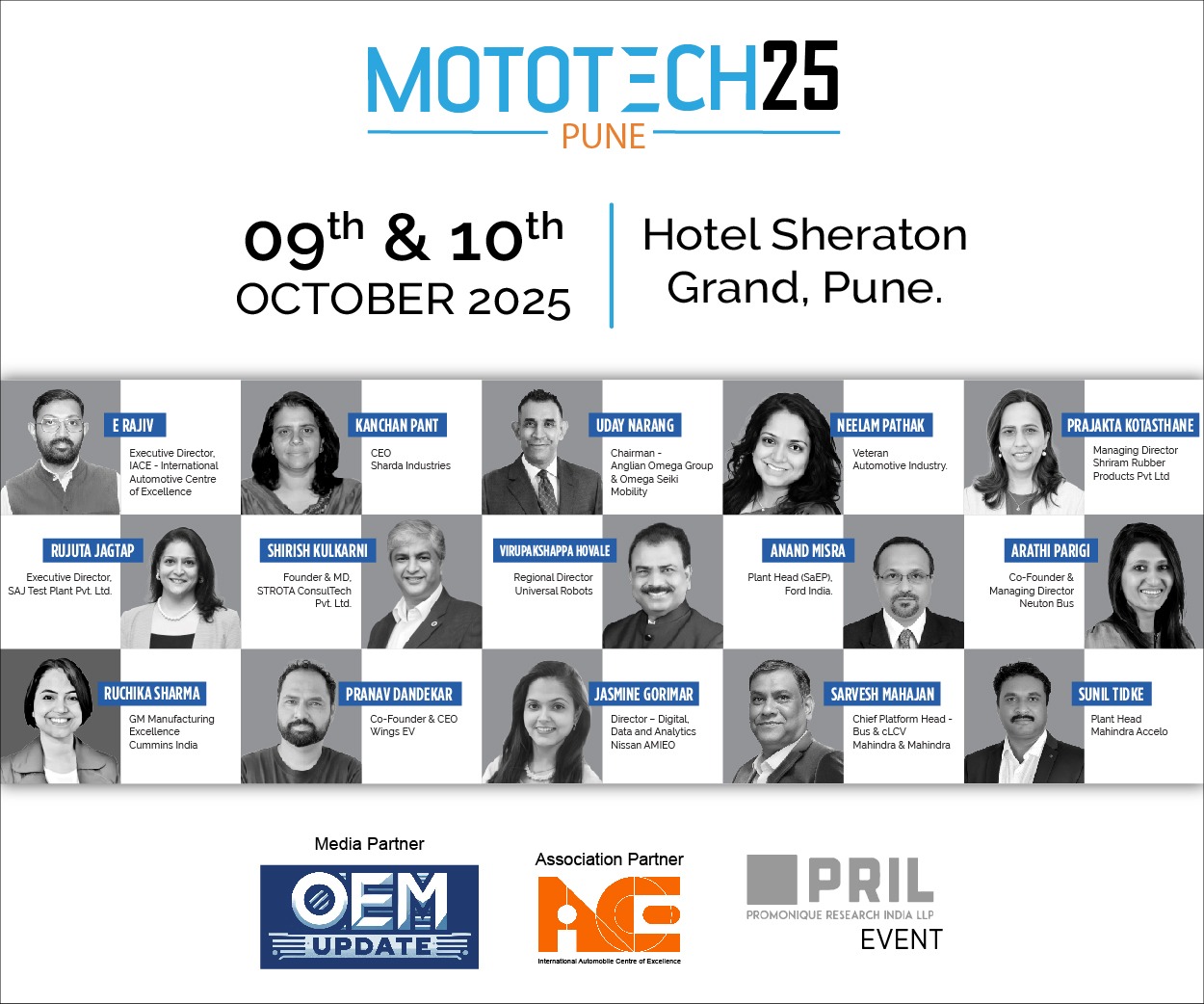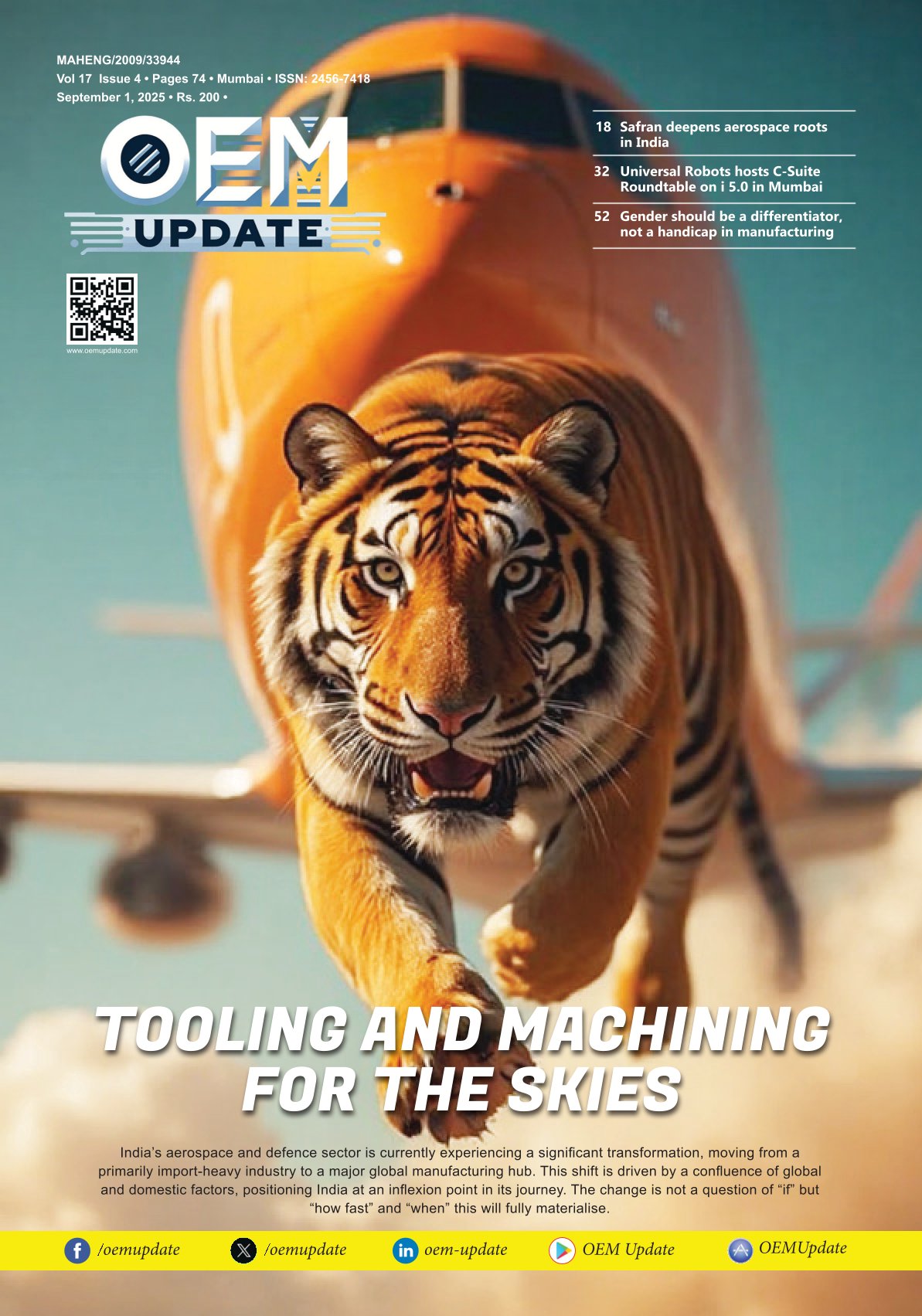The consumerisation of manufacturing IT
By admin June 13, 2015 12:37 pm IST
Smart devices are a consumer success story. Their portability and power are also helping to ‘smartify’ the manufacturing industry – and this is just the start, explains Christoffer Malm, Head of Connectivity Room at SKF
Smart devices such as iPhones and tablets have created a consumer revolution. No household, it seems, is without one. Smartphones double up as personal stereos and satnavs, while tablets are used as games consoles and portable movie screens. In business too, tablets are increasingly preferred to laptops, particularly for enhancing engagement during the sales process.
Now they are spreading to the manufacturing and engineering sector including the factory floor. Manufacturers are harnessing the connectivity, portability and computing power of smart devices to ‘smartify’ the engineering world and create a revolution of their own.
SKF, being at the forefront of this, has developed an infrastructure that will allow industry users – whether white or blue collar – to embed smart devices into their working practices. Whether for portable maintenance, personal instruction or simply banishing paper, smart devices are helping manufacturing companies boost their productivity.
The potential gains are enormous. SKF has observed the productivity gains of 12 per cent from engineering staff armed with tablets. It allows them to do their job more efficiently, while accessing and making sense of more information.
Case studiesApple’s App Store already offers more than 30 apps developed by SKF. They have all been channelled through the company’s digital innovation catalyst team, known as Connectivity Room. Here, SKF engineers distil their knowledge and expertise into apps that can help both SKF’s own employees and many of its customers. All of these apps take knowledge and translate it into software, with powerful analytics and IT algorithms processing the data. Smart devices are the window to access this underlying knowledge.
A major US-based customer of SKF that repairs large industrial equipment which often comprises many thousands of components. In such case each step of the process needs to be documented. Earlier, this used to be done with pen and paper, creating a paper trail in case of customer complaints. Now, SKF has developed a data collection system accessed via a phone- or tablet-based app. The huge paper archive can now be replaced by a database, which the customer can instantly access and make sense of.
Using the new system, information on components is still entered manually because they are from different suppliers. Some components will have a unique ID, while many will not. But it’s early days for this kind of system. In future, for appropriate applications, parts might be barcoded or able to broadcast a unique signal – completely removing the need for manual entry. By registering a technician’s position on the shop floor, the nature of a particular maintenance procedure, and the time it is carried out, the smart device can automatically create a log history for each part.
SKF has also developed a number of apps that turn phones and tablets into measuring instruments. These are being trialled at one of its Gothenburg factories to help carry out maintenance as quickly as possible. With help from an internal positioning system (a kind of factory floor GPS), the app pinpoints the position of maintenance staff on the factory floor. When a machine develops a fault, an alarm is sent preferentially to the nearest person, ensuring the fastest possible response.
Other apps guide maintenance staff through monitoring procedures. Sensors are often connected to smart devices, turning them into measuring devices for vibration, temperature and other critical measurements. SKF’s engineers have taken this a step further, by adding an app that tells the operator where to place the sensor – in order to get the best reading, and better results.
In similar fashion, a system called AliSensor ShaftLaser streamlines the process of alignment. Usually, when aligning, for example an electric motor with a pump or fan, a technician would traditionally carry with them a lot of heavy equipment. Now, thanks to smart devices and the minimisation of sensor technology, the equipment weighs much less. Through the guided support, visualisation and instruction provided by the app, training is heavily reduced and the understanding of what to do and when is made much more clear.
AliSensor ShaftLaser was developed by GLOi – a Swedish alignment technology specialist that SKF acquired in September last year. GLOi developed the integrated shaft alignment solution, based on the iOS operating platform used by iPads and iPhones.
Mobile advantageSKF has developed a Mobile Operator Support Tool (MOST), which visualises the factory production line and connects machine data in real time. MOST will transform the way that operators interact with machinery, by supplying them with the right information, at the right time and in the right place – via a customised mobile device such as a tablet or smartphone.
Delivering this wealth of information exactly when it is needed will bring multiple benefits. Operators will be empowered to improve manufacturing performance, and to diagnose and make decisions close to the problem. They will be instantly aware of real time manufacturing process data, such as energy consumption and product variability and be able to act on it.
Overall, MOST will help operators overcome many of their everyday problems, leading to greater work satisfaction and greater empowerment.
The ultimate aim of MOST is to make it as easy as possible to do the right thing. As well as delivering process data direct to operators, it will include various instructions – how to re-set machines and equipment, preventative maintenance procedures, and much more. These will now be at the operator’s fingertips, rather than in a manual somewhere.
Even if the information is in another employee’s head, it can be accessed quickly: one feature of MOST is a communications tool that allows operators and managers to text one another in order to solve problems. This feature has proved extremely effective during factory trials in Gothenburg.
One of the huge benefits of smart devices is their ability to simplify data by visualising it clearly. As well as giving instant comprehension of large data sets, it could be used to give simple instructions that guide operators through a particular process, and this has already been implemented in a number of SKF’s apps like AliSensor ShaftLaser for shaft alignment.
MOST can also identify the presence of humans in the factory. The heat treatment department of SKF’s Gothenburg factory is 8,500 sq.m. which is covered by a handful of maintenance personnel. As well as pinpointing the closest operator to a particular machine to aid productivity, the smart device can act as a safety alarm. If a ‘Where are you?’ alert receives no reply, operators can quickly be tracked down – in case they have fainted, for example.
Plain sailing?There are obvious advantages to using smart devices in engineering, but a note of caution should be sounded. As with any kind of new technology, there are hurdles to leap before it becomes fully accepted. Because there are issues to resolve and minds to change.
Lots of data flows between these devices which rely on WiFi or 3G. But this extra connectivity raises huge concerns about security. Adding more cloud services outside the firewall introduces a potential weak spot, and companies are keen to ensure their in-house data is not compromised.
These services will be accessed in a number of ways such as http, https or through new standards. Password protection will be vital, but to make these services usable there needs to be a balance between tight security and ready access. If you build a fortress, nobody will use it; protect it with a single password, and the data could be at risk. In the end, it will be a careful balancing act between the two extremes.
Immaterial of the type of technology introduced in an enterprise or to customers, it cannot by itself bring about a change in the way of working or improvements to a certain user scenario. The new technology always needs to harmonise with people and processes to be successful. To be truly effective, add value and cause a redesign of way of working or of a specific process requires a vision of what role the smart devices play. The integration and visualisation of information on those devices then becomes the true innovation. This is something that requires a lot of thought, a lot of perseverance and a lot of drive.
You also need to consider the people facilitating the process and therefore potentially using the smart device. How does the smart technology affect them? How does it change their routine and general activities? What is their level of experience of using smart devices?
Questions such as these must be considered to facilitate the adoption of any new technology and to anticipate any potential resistance so that it can be proactively addressed. In some cases these issues will need to be addressed at a much higher level within an organisation, as its culture, values and general attitude at a corporate level to technology will also have a significant impact on how the technology is utilised and ultimately how much benefit it provides.
Information overload?The key to systems like MOST is making sense of data. Generating information is one thing; managing it is another. In order to take full advantage of this enormous new data set, it needs to be filtered and presented clearly. There may be top-class hardware, smart devices, apps that gather and collect info, and dashboards, but much of the focus will be on maintaining and ensuring the quality of data and working out how to make sense of it.
We need to simplify data visualisation, so the complex information can be instantly understood – and acted upon – by technicians and maintenance personnel. It needs to be a simple interface with powerful data analysis.
Dealing with this data overload will be crucial. We’ll have to look at wireless AP (access point) management as it’s called in the IT industry, by creating an interface to integrate all the different data streams.
The goal is simple: to present the necessary information clearly, and in real time, allowing recipients of that data to act on it quickly.
SKF has already come some way in its journey into mobility. With technology evolving at such a rapid pace, there is no doubt that in the not so distant future things will have moved even further.
Smart devices will increasingly become the window through which information is communicated. Today, it is done using off the shelf models like iPhones and iPads, augmented by rugged cases to make them IP68 compliant. In future, these will be tailored devices – thinner, more robust and with new features built in.
Smart devices have already proven themselves in the demanding consumer market. If the manufacturing industry were to embrace the technology with the same enthusiasm, just think where we could all be in terms of productivity.n
Authored by__
Christoffer Malm, Head of Connectivity Room, SKF
Cookie Consent
We use cookies to personalize your experience. By continuing to visit this website you agree to our Terms & Conditions, Privacy Policy and Cookie Policy.
















